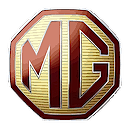This can call for a bit of sleuthing, but is usually not too hard to find. Get yourself a small magnet, and put a piece of smooth tape over the face of it to protect the paint. Go around the car, touching the magnet to the body and feeling how hard it sticks. Any spot where the magnet does not stick has plastic filler behind it. Not all bodywork is bad bodywork. For example, it may be that the doglegs have already been repaired, and a small amount of plastic at the seam is to be expected. We are looking for bad bodywork, involving huge amounts of plastic and poor paint processes. Look at the texture of the surface under the paint. Does it have sandpaper scratches or pinholes? Those are evidence of poor bodywork. Look at the front fender joint at the edge of the engine compartment. Does it look like the fenders have been removed or replaced? Does the paint match? How about the boot and the bonnet? Do they look like they been swapped for ones from a different car? Play detective.
Check the boot floor, at the bottom of the latch brace. It should be level with the rest of the floor. If there is a buckle, the car has been hit in the rear. On chrome-bumpered cars, check for damage where the over riders face the rear of the body. These should not be touching the car, and dents or filler are more signs that the car has had a bonk on the bumper.
Up front, have a look at the inner fenders and the bonnet latch panel. Major crash damage shows up as buckles in the inner fenders. Even worse is if you find repair sections from another car “lapped” onto these panels. That tells you the car was really hit hard and then quickly patched up. Remember, these are unibody cars. If these panels are torqued or twisted, the suspension will not be in alignment and the car will not handle right. It may even steer dangerously wrong. If you find this kind of patch, you will have a major project to make the car straight again. The correct way to repair major crash damage panels is to remove the damaged sections at the factory welds, all the way back to undamaged area. Then, new panels are welded in at the same points, all the while keeping the chassis in alignment. It is not a quick job. Look close and hard at any of these “shortcut” repairs before deciding whether the car is a keeper.
